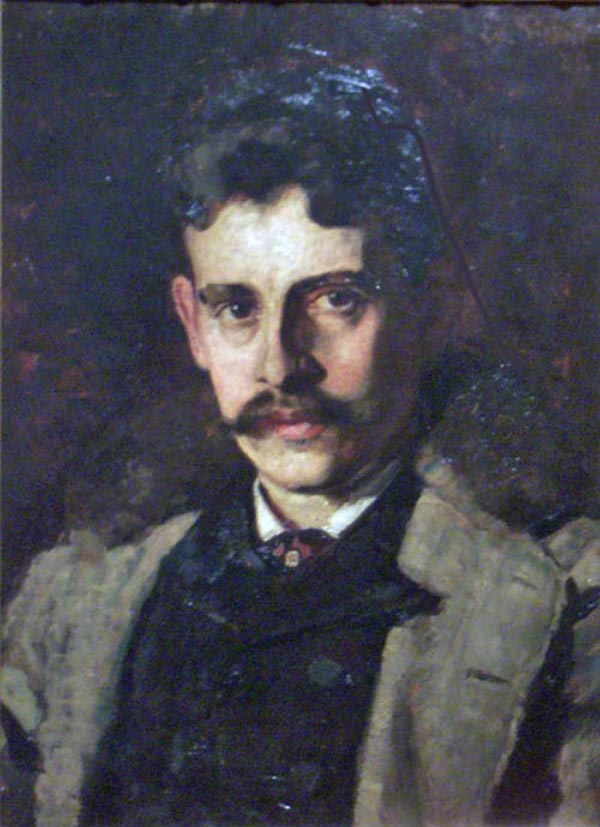

 Portrait of Francis Noyes, oil on canvas; 21" x 15" (image) 29" x 23" (with frame), inscribed, titled, and dated (1885) verso.
Portrait of Francis Noyes, oil on canvas; 21" x 15" (image) 29" x 23" (with frame), inscribed, titled, and dated (1885) verso.
Edward Selmar Siebert was born in Washington, D.C. in July, 1856, one of six children. His father, Selmar, ran an engraving and printing shop in Washington at the time. With the outbreak of the Civil War in 1861, his parents returned to their native Germany. In 1872, at age 16, Edward began his art training in Weimar under Albert Baur and Karl Gussow. Siebert returned to Washington, D.C. in 1875, his family having moved there again earlier, but in 1879 he again went to Germany, studying th is time in Munich and Karlsruhe. The artist moved back and forth between Germany and the U.S. several times over the next two decades studying and teaching. Having become well known for his portraits, Siebert journeyed to Rochester, N.Y. in August, 1911 to paint George N. Saegmuller, a Bausch and Lomb executive. What began as a temporary engagement in Rochester, became a permanent home for the artist.
One of Siebert’s best known works – The Flute Player – is in the Corcoran Gallery in Washington. Industrialist Andrew Carnegie sat for a portrait by Siebert, and Siebert’s portrait of Thundercloud was the the last ever painted of the famous Blackfoot chief. The artist died in Rochester in 1944. One of his better known students, Milton Holm, once stated: “It’s the constant reworking of color that ruins a picture. I want a fresh look, so I paint, as my old teacher, Edward Siebert, would say, ‘touch by touch.’”
In addition to the Corcoran Gallery, works by Siebert can be found in the Smithsonian American Art Museum, the Memorial Art Gallery of the University of Rochester (NY), and George Washington University.
Prices available on request